As the use of third-party cookies decreases, the need for personalized advertising increases, the data used for healthcare provider (HCP) marketing campaigns becomes increasingly crucial. HCP marketers are turning to 1:1 National Provider Identifier (NPI) targeting as a way to efficiently reach HCPs, offer personalized ads, and avoid any potential privacy issues. NPI targeting achieves these goals by utilizing first-party data, which ensures compliance with privacy regulations. Additionally, this targeting method allows for the targeting of specific, known audiences, enabling the delivery of tailored digital advertising that addresses the specific needs and interests of HCPs.
NPI: What You Need to Know
The NPI is a unique identification number, assigned by the Centers for Medicare and Medicaid Services (CMS) to HCPs in the United States, as part of the administrative simplification standard under the Health Insurance Portability and Accountability Act (HIPAA). It is used to identify HCPs in a standard way across different systems and organizations. As per HIPAA, the use of NPIs is mandatory in financial and administrative transactions carried out by HCPs, health plans, and health care clearinghouses. The NPI is a 10-digit numeric identifier and does not contain any additional information such as the medical specialty or the state of residence of the healthcare provider.
What is NPI targeting?
NPI targeting allows advertisers to reach HCPs on a personalized level by targeting specific American Medical Association (AMA) recognized medical specialties, as well as other characteristics such as license type, hospital affiliation, address, practice name and insurance carrier. This level of precision enables advertisers to effectively engage their target HCPs, potentially leading to better business outcomes. Additionally, using NPI targeting can result in a higher return on ad spend by focusing impressions on the intended target audience, rather than wasting them on unqualified individuals.
Implementing NPI targeting is an essential aspect of a healthcare brand’s marketing strategy, as it ensures that budget is not wasted on an unknown audience. However, it’s important to keep in mind that relying solely on NPI targeting lists based on self-reported specialties can limit the options available.
Examples of how companies in the healthcare industry use NPI targeting.
Overall, the specific tactics and channels will depend on the HCPs being targeted and the products or services being offered. However, these are just a few examples of how companies in the healthcare industry are using NPI targeting.
- A medical device company used NPI targeting to reach orthopedic surgeons to promote their new knee replacement device. The company used a combination of direct mail, email marketing, and PPC advertising to reach its target audience.
- A healthcare company IT used NPI targeting to reach primary care physicians and promote its new electronic health record system. The company used a combination of social media advertising, email marketing, and networking events to reach its target audience.
- A pharmaceutical company used NPI targeting to reach oncologists and promote its new cancer drug. The company used a combination of print advertising, email marketing, and direct mail to reach its target audience.
- A home care provider used NPI targeting to reach geriatricians and promote its services. The company used a combination of email marketing, PPC advertising, and networking events to reach the target audience.
Which data sources power NPI targeting campaigns?
Healthcare marketing requires a unique approach compared to other forms of advertising because of regulatory requirements and the need for brand safety. In order to effectively reach the desired healthcare providers (HCPs) on a one-to-one basis, programmatic advertising platforms can be utilized. These platforms utilize deterministic data that links each HCP’s offline identity to their online identity, allowing for targeting at the NPI level. By using HCP databases, daily outbound calls, and personalized landing pages, programmatic advertising platforms can identify NPIs and optimize ad performance.
In addition, NPI compliance data contain a wealth of information about the HIPAA status of HCPs, including their specialties, which can provide pharmaceutical marketers and medical solution providers with insight into the interests of physicians in a particular specialty.
A regularly updated health record is an indispensable resource for those who want to deliver engaging and personalized messages to physicians based on their areas of expertise. A variety of data sources are available for NPI targeting campaigns, including first-party, demographic, contextual, location, and behavioral data.
First-party data
First-party data refers to information that is collected directly from the healthcare provider organization or from the company’s own customer relationship management (CRM) system. This type of data is considered to be the most reliable and accurate source of information about HCPs, as it is collected directly from the source.
Examples of first-party data in HCP marketing include:
- Contact information, such as name, email address, and phone number
- Demographic information, such as age, gender, and specialty
- Professional information, such as license type, hospital affiliation, and insurance carrier
- Practice information, such as practice name, address, and NPI
- Interaction history, such as previous engagements, interactions with marketing campaigns, and event attendance
This information can be used to create targeted marketing campaigns that are tailored to the specific interests and needs of HCPs. First-party data can also be used to track engagement and measure the effectiveness of marketing campaigns.
Contextual data
Contextual data refers to information based on the content of a web page or the context of a user’s online activities. They are used to determine the relevance and appropriateness of advertising to a particular web page or user. For example, if a user views a web page about a particular medical condition, contextual data may be used to display advertisements for related treatments or medications. If a user searches for information about a particular medical procedure, contextual data may be used to display advertisements for HCPs who specialize in that procedure.
This type of data may be collected from a variety of sources, such as web page content, keywords, meta tags, the user’s browsing history, and even their location. This information is analyzed by algorithms to understand the context of the web page or user activity and serve ads that are relevant to them.
Demographic data
Demographic data refers to information about the characteristics of a particular group of people. These characteristics may include age, gender, race, ethnicity, income, education level, occupation, and geographic location. Demographic data is often collected through surveys, questionnaires, or analysis of publicly available information.
The data can be used to target specific groups of HCPs with tailored advertising campaigns. For example, if a pharmaceutical company wants to promote a new drug to treat diabetes, it can use demographic data to target HCPs who specialize in endocrinology and have a high proportion of diabetes patients in their practice. By targeting in this way, the company can reach the most relevant audience and increase the likelihood that the drug will be prescribed.
Location-based data
Location-based data is information that relates to a specific geographic location or region. This type of data can be used to target and tailor marketing efforts for health care providers (HCPs) in specific geographic areas, such as a city, state, or region.
The data may include information such as geographic region, market area (DMA), or zip code. This information can be used to identify and target HCPs in specific geographic areas, such as near a hospital or clinic. This can be particularly useful for HCPs who want to expand their reach or for pharmaceutical companies who want to target specific geographic regions for their products.
In addition, data can be collected from a variety of sources, including GPS data from mobile devices, IP addresses, and self-reported information from healthcare professionals. This data can be used to create geographic segments and target specific HCPs based on their location.
Behavioral data
Behavioral data refers to information collected about the online activities and engagement of HCPs. These data are used to understand how HCPs interact with online content such as websites, social media, and emails, and may include information such as the pages they visit, the links they click, the content they engage with, and the time they spend on a website.
The data can be used to gain insights into HCPs’ interests, preferences and needs, which can then be incorporated into targeted marketing strategies and campaigns. For example, if an HCP frequently visits a website about a particular condition, the behavioral data can be used to show them ads for related treatments or products. If an HCP frequently interacts with content about a specific medical procedure, behavioral data can be used to serve ads to HCPs who specialize in that procedure.
Behavioral data can be collected through the use of tracking technologies such as cookies, web beacons, and pixels. It is important to comply with relevant privacy laws and regulations when collecting and using behavioral data.
All in all, it is important to note that any type of personal information should be used in accordance with privacy regulations, such as HIPAA, and it is critical to consult with legal counsel to ensure compliance with these laws.
What are the benefits of NPI targeting?
Using NPI targeting in healthcare advertising can be beneficial as it allows you to target specific HCPs with tailored messages and offers, increasing the likelihood that they will be receptive to your message. Some of the key benefits include:
1. Precision Targeting

Precise targeting for NPI campaigns involves using the unique NPI number assigned to HCPs to target and reach a specific group of providers. This can be done through various channels such as email, direct mail, and telemarketing. By using the NPI number, marketers can ensure that their messages reach the intended audience and not the general population.
This type of targeting is particularly useful for pharmaceutical companies, medical device manufacturers, and other healthcare companies that want to reach specific groups of HCPs, such as those who specialize in a particular medical specialty or work in a specific geographic area. For example, a pharmaceutical company might target primary care physicians in a particular state to promote a new drug for a specific condition.
In addition, targeting can also be used to exclude certain groups of providers. For example, a medical device manufacturer could target all orthopedic surgeons except those already using a competitor’s product.
All in all, precise targeting using NPI allows healthcare marketers to reach their audience with greater accuracy, resulting in a higher return on investment for their marketing campaigns.
Advertisers can leverage comprehensive intelligence solutions to improve campaign effectiveness and more directly link media spend to business impact by gaining deep insights into HCPs’ historical journey and tracking their digital activity in real time. In summary, NPI targeting can be used to:
- Build audience lists based on clinical behavior, digital activity, and other brand-specific targeting criteria.
- Compare average TRx (Total Prescription) of prescribers and exposed prescribers to assess the impact of a campaign on CLV (Customer Lifetime Value).
- Determine the impact of a campaign on HCP behavior by comparing the number of new and existing prescribers and prescriptions issued over the life of the campaign.
- Capture 1:1 NPI data on key new and existing prescribers most impacted by the campaigns, as well as key droppers, to gain a detailed understanding of pre- and post-campaign differences in clinical behavior.
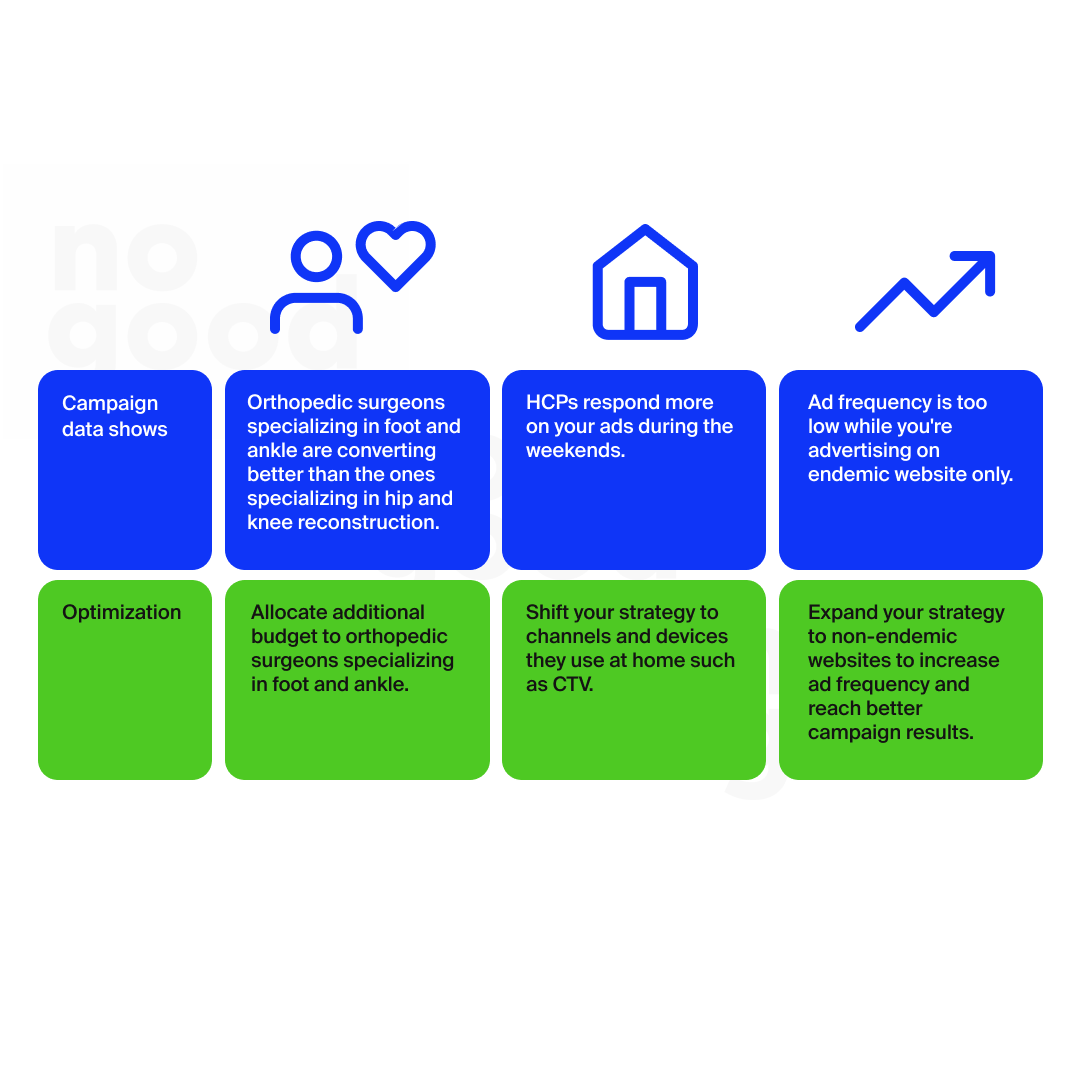
2. Personalization

NPI targeting enables the delivery of tailored and personalized messages to HCPs based on their areas of expertise, interests, and needs. Personalization can help organizations in the following ways:
- Better understand their audience and tailor their messaging to specific HCPs.
- Increasing the relevance of messages, which can improve the effectiveness of campaigns.
- Build stronger relationships with HCPs by demonstrating that they understand providers’ unique needs and concerns.
- Stand out from their competitors and increase the likelihood that their messages will be noticed and acted upon.
- Save your marketing budget by not targeting irrelevant audiences.
- Make the most of their NPI data by identifying patterns and trends that can be used to optimize future campaigns.
3. Compliance With Regulations
NPI targeting is compliant with the HIPAA and other healthcare regulations, ensuring HCPs and marketers can reach their target audiences without violating regulations. Organizations can benefit from compliance in several ways when using NPI targeting campaigns:
- Compliance helps companies avoid fines and penalties that may be incurred for non-compliance.
- By only targeting HCPs who have consented to receive marketing materials, organizations can increase the effectiveness of their campaigns by reaching a more engaged audience.
- Complying with HIPAA regulations and refraining from making false or misleading claims in marketing materials can help companies maintain a good reputation and gain the trust of HCPs.
- Compliance can help companies avoid litigation.
- Compliance can help companies ensure they are not sending unwanted or unappreciated messages to HCPs, which in turn can help them maintain good relationships with them.
4. Increase Return on Investment (ROI) by Accurate Campaign Reporting

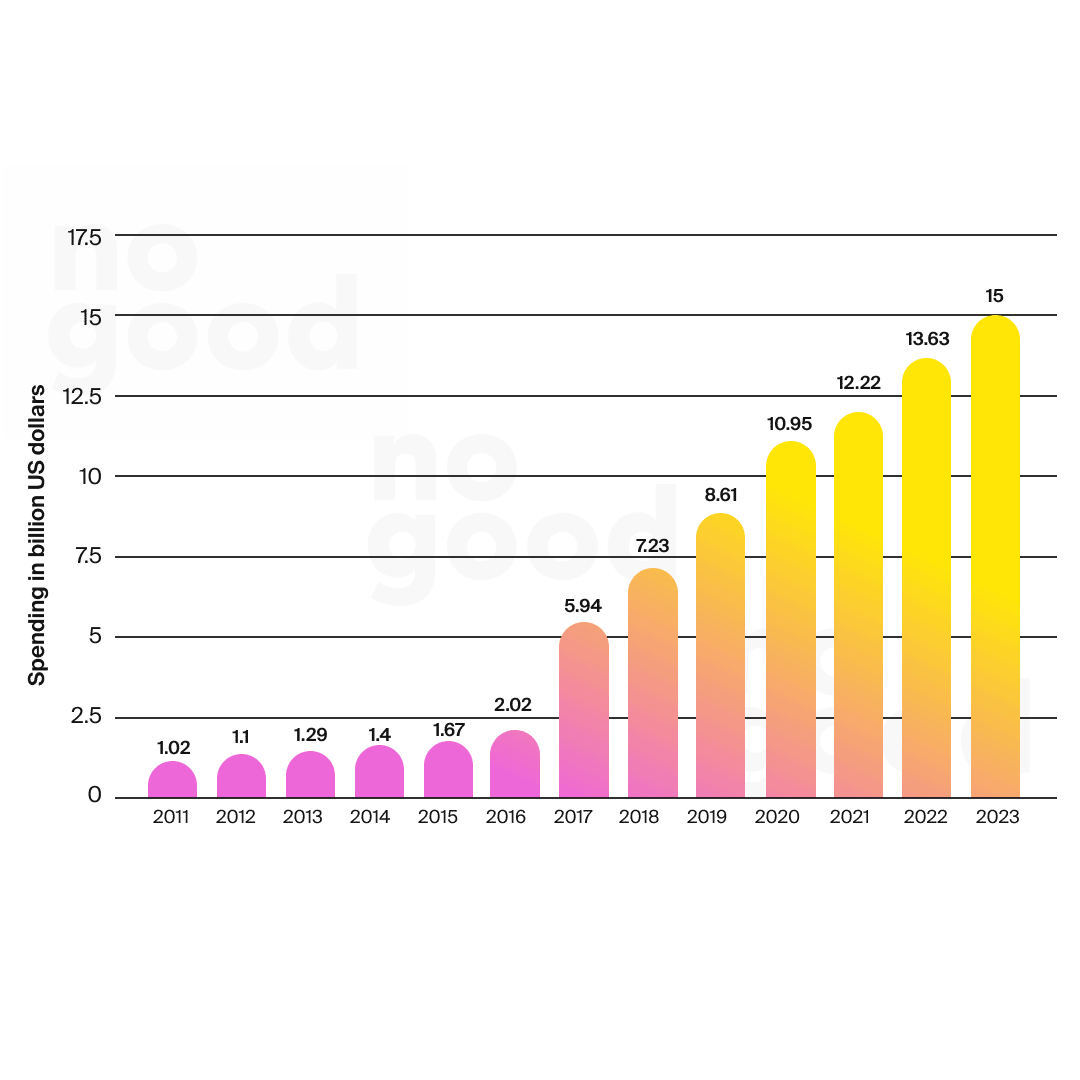
Image Title: Healthcare and pharmaceutical industry digital advertising spending in the United States from 2011 to 2023 (in billions U.S. dollars). Source: Statista
NPI targeting campaigns enable accurate reporting by allowing healthcare marketers to track and measure the engagement and effectiveness of their campaigns at a granular level. By targeting specific HCPs using their NPIs, marketers can track and analyze engagement data such as click-through rates, conversion rates, and revenue generated from the campaign. This can help to identify which HCPs are most responsive to the campaign, and which segments of the target audience are most engaged.
Additionally, NPI targeting campaigns can also enable accurate reporting by providing insights into the behavior and characteristics of the target audience, such as their specialties, locations, and practice types, which can help to identify patterns and trends in their engagement with the campaign. This can help to improve the targeting of future campaigns, and adjust the messages and content to better match the interests and needs of the target audience.
Furthermore, with NPI targeting, marketers can also track the offline actions of HCPs, such as the prescriptions they wrote, the purchases they made, or even the patient referrals they made, by matching the NPI with claims data or other data sources, this can help to get a complete view of the effectiveness of the campaigns.
Overall, NPI targeting campaigns provide healthcare marketers with a wealth of data that can be used to improve the targeting and effectiveness of their campaigns, and to understand the behavior and preferences of their target audience, leading to a higher ROI.
5. Increase of Patient-Centric Approach

NPI targeting enables the delivery of personalized messaging and targeted campaigns to HCPs, which can help improve patient outcomes. Organizations can benefit in the following ways:
- By focusing on patient needs and concerns, companies can improve the effectiveness of their campaigns by providing information that is relevant and helpful to patients.
- By targeting HCPs, companies can help improve patient outcomes by providing information that can be used to improve patient care.
- Build stronger relationships with HCPs by demonstrating that they are committed to improving patient care.
- Enhance their company’s reputation in the healthcare industry, which can help attract new clients and customers.
- Help patients find and access the right HCPs and services they need, which can help improve their overall healthcare experience.
- They increase the likelihood that their messages will be shared by HCPs and patients, which can help increase brand awareness and credibility.
What are the best healthcare advertising tactics & channels when you use NPI targeting?
1. Mobile advertising; small screen, big benefits
With smartphone penetration and usage at an all-time high, companies are devoting more resources to mobile advertising than ever before. This use of the mobile revolution is most evident in the United States, which has the world’s largest market for mobile advertising.
Mobile ad spending is expected to reach a new high of $327.1 billion in 2022. This figure represents a 17.2 percent year-over-year increase, and according to the latest data, spending will reach nearly 399.6 billion by 2024.
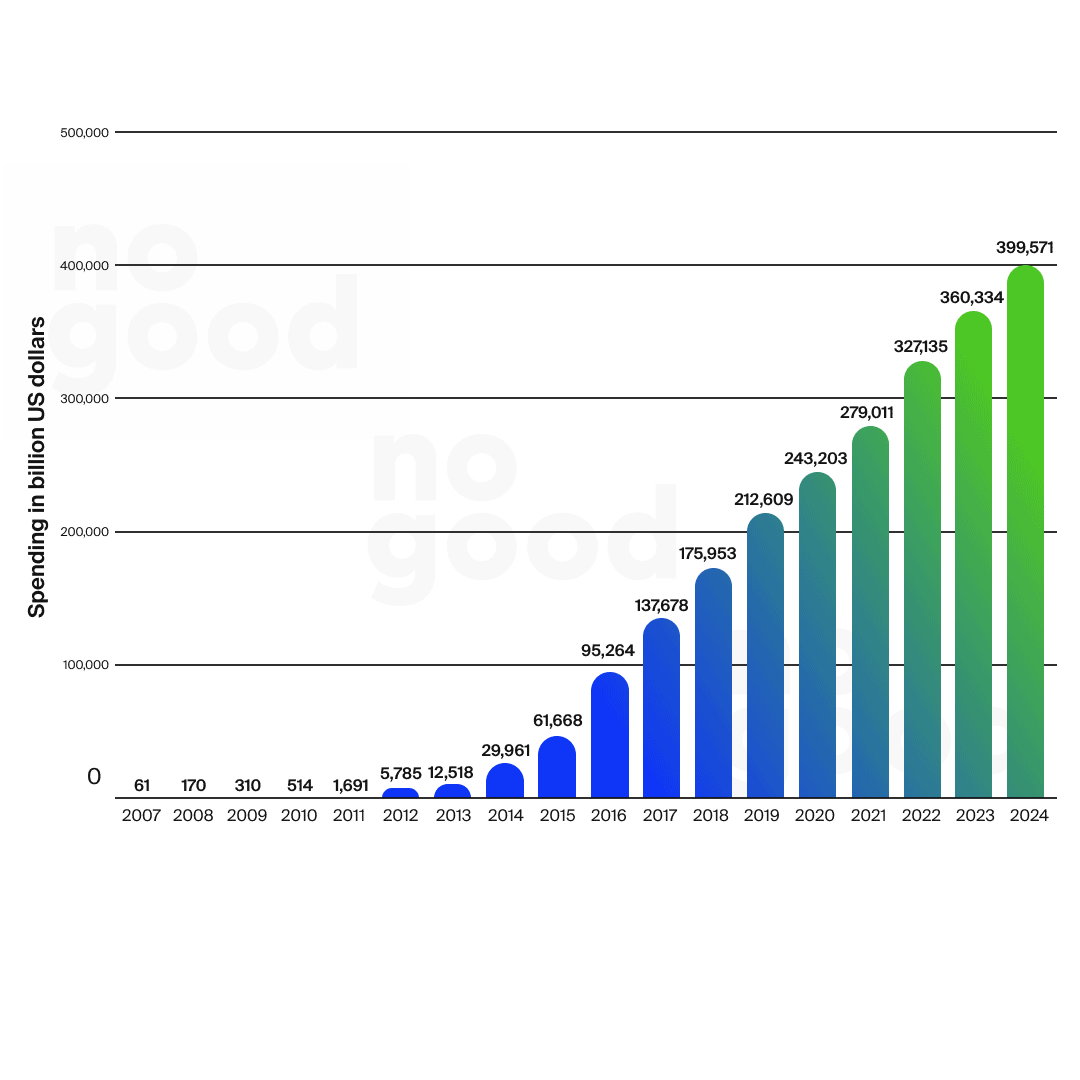
Image Title: Mobile advertising spending worldwide from 2007 to 2024(in million U.S. dollars)
Reasons to choose:
- Increased use among HCPs: They have incorporated mobile devices use during their office hours, utilizing it to communicate with colleagues, patients, or access test results and patient data.
- Higher CTRs: Mobile app ads generate a 100% increase in CTRs over desktop
- Lifespan: Cookies on desktop generally only have a lifespan of around 14-21 days, while device IDs on mobile remain consistent indefinitely unless a user does a device ID reset (which rarely happens). This makes it easier to target HCPs and track your advertising over time.
Pro tip: Find out what topics are most important to HCPs, such as medical news, educational opportunities, and patient education information. That way, you can find out what the HCP audience spends their time on, and then run your ads.
2. Retargeting
Retargeting is critical to the success of any HCP campaign. In a world where being relevant is increasingly important, retargeting is the answer. It costs less and leads to more conversions. In fact, retargeting can increase conversions by 150%.
Reasons to choose:
- Reduces spend: Retargeting is extremely cost-efficient and can lower cost per acquisition (CPA) by as much as 44%. This is because you are only targeting the specific HCP NPIs that who’ve already shown interest in your product or service. As a result, you won’t be allocating any spend to reach people who aren’t ready to convert.
- Drives conversions: HCPs are 70% more likely to convert when using retargeting. With retargeting, you can continue the conversation with people who are lower in the funnel; one more touchpoint with your brand may be all that they need to reach the bottom of the funnel.
- HCPs appreciate them: Overall, HCPs have more positive feelings towards retargeting than negative ones. In fact, 75% of consumers notice these types of ads and 25% even enjoy them.
Pro tip: Cross-channel is the crown jewel in every advertisers’ minds right now because people, including HCPs, hop from one digital channel (and device) to another during their path to purchase.
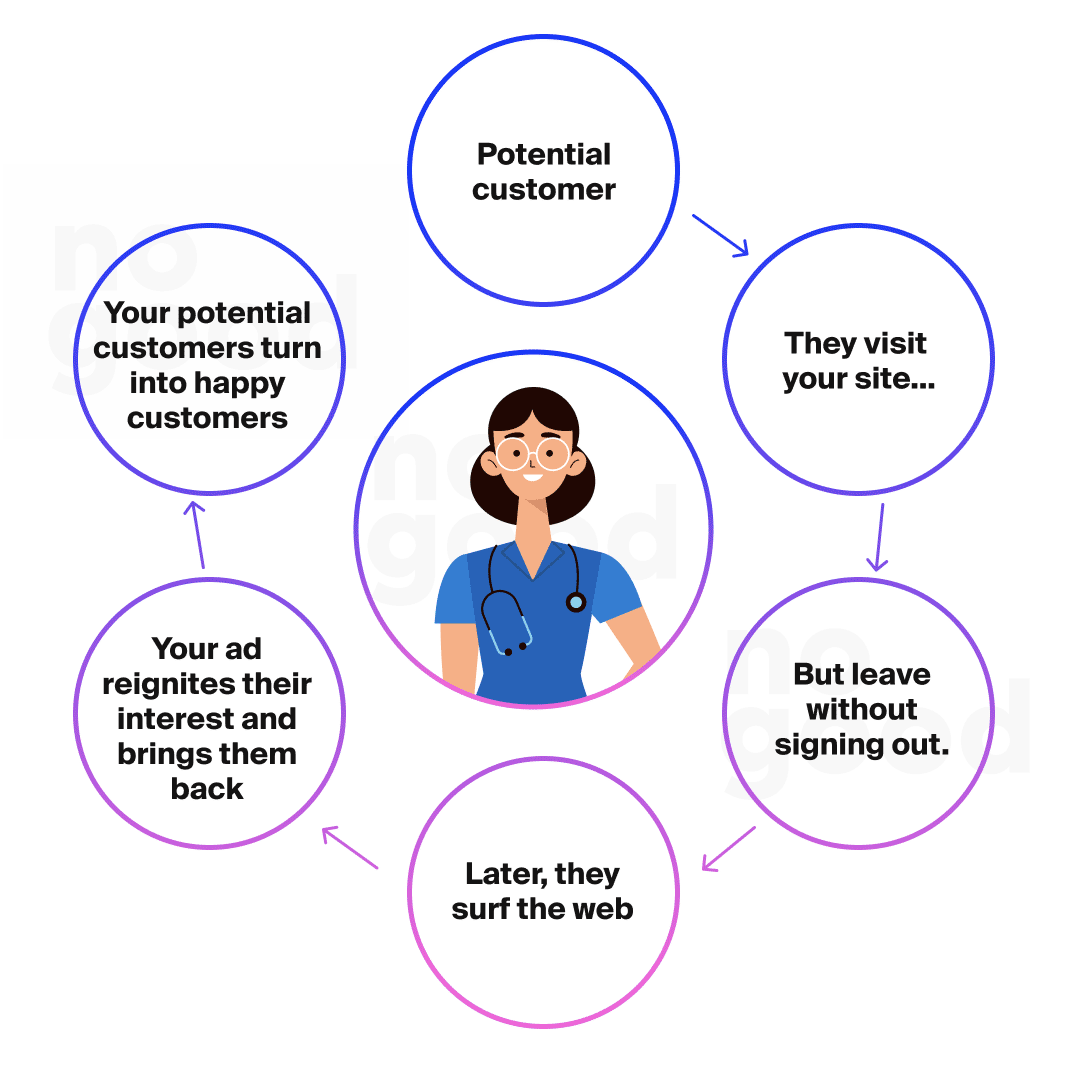
3. Contextual advertising
Contextual advertising, the practice of serving ads on webpages based on those pages’ content, is becoming increasingly popular among marketing professionals, including healthcare advertisers. In fact, the contextual advertising market worldwide is expected to grow with a CAGR of about 18% over the next few years.
Reasons to choose:
- It Just Works: One study found that contextually relevant ads generated 2.2 times better ad recall and 43% more neural engagement. When paired with a very specific keyword strategy, it can also boost brand awareness by up to 93%. This checks out given that these ads revolve around data tied directly to the page’s content. For example, a medical device brand looking to promote an implantable cardiac loop recorder can target keywords cardiologists search for, like “cardiac device” or “cardiovascular system disorder.”
- Lower Costs: Traditionally, HCP marketers have looked to endemic sites, like popular medical journals, because it was the only way to reach their goals. The problem? The price. Their popularity makes advertising on them more expensive. Contextual advertising lets you advertise on non-endemic sites, which have less competition. The result? More cost-efficient campaigns.
- Improved Brand Safety: Every HCP marketer wants their ads associated with sites that align with their values and brand. After all, who would want to find their inventory next to hate speech or conspiracy theories? With contextual advertising, you can tell the media platform what types of keywords and content you want your ads associated with and not associated with.
What are the types of ad formats available for NPI targeting?
There’s a lot that goes into successful healthcare advertising and choosing the right ad format is just as important as targeting the right audience. With so many ad formats available, it can be hard to choose the right one. However, if you start by asking yourself the following three questions, the decision will become abundantly clear.
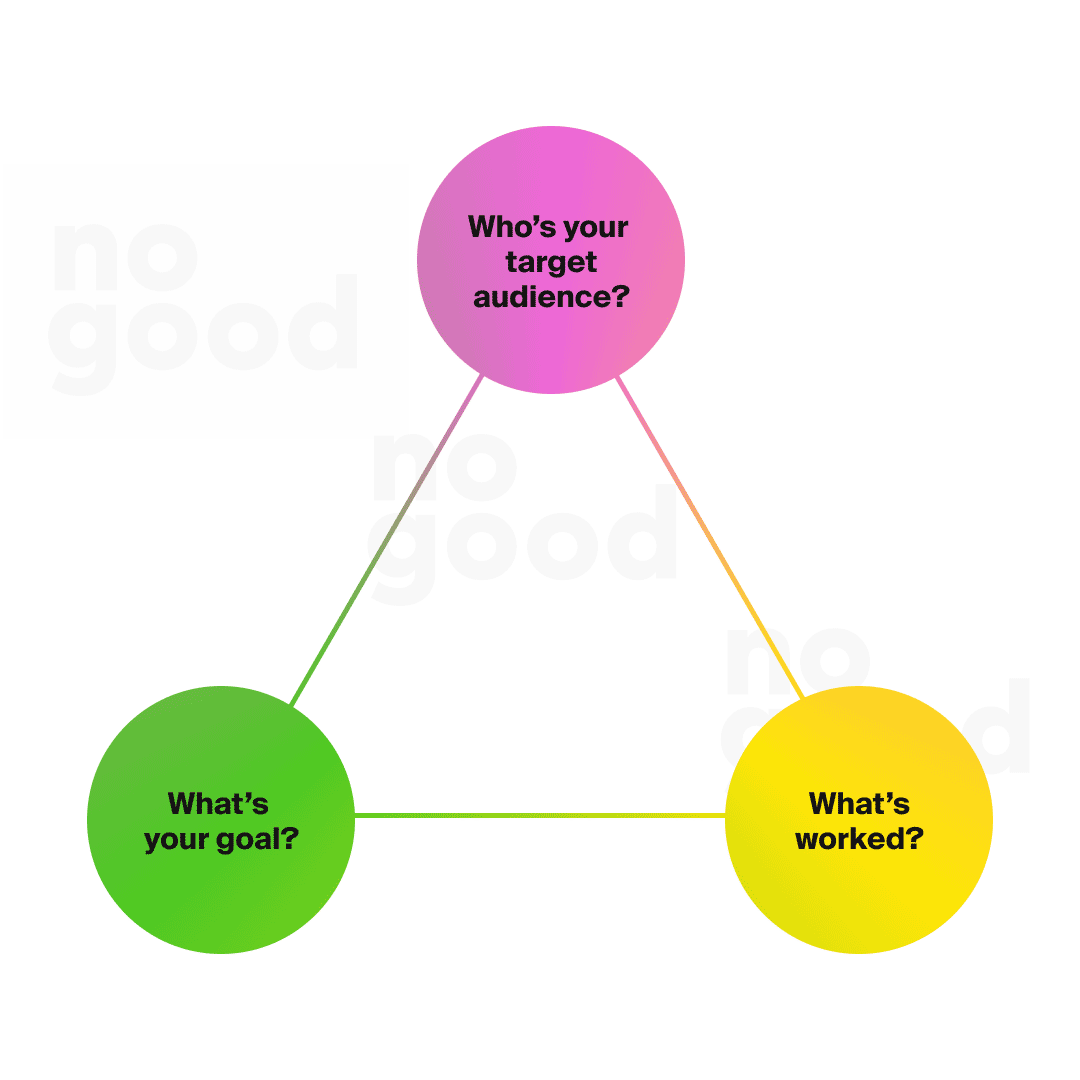
Here are the three ad formats that increase HCP engagement:
CTV & OTT Ad Formats
According to eMarketer, 204 million people use CTV devices. Additionally, more than 55% of the US population has an OTT subscription. The growing popularity makes it a clear-cut avenue for your ad dollars. CTV and OTT ad formats come in various shapes and sizes.
- Commercial Ads: Ads that occur naturally when an HCP streams content.
- Home Screen Ads: Ads HCPs see when they’re on the home screen or scrolling through content.
- Interactive Ads: Ads with a layer of interactivity that gives HCPs the chance to learn more.
Video Ads
90% of advertisers say that video is the most compelling part of their digital campaign. People are 27.4x more likely to click a video ad than standard banners.
- Non-Linear Ads: Non-linear ads play simultaneously with a video—think overlay ads on YouTube.
- In-Stream Ads: In-stream ads play before (pre-roll), during (mid-roll), or after (post-roll) a video.
- Outstream Ads: Outstream video ads don’t have to relate to the web page’s content. You’re most likely to see this type of video ad
- in the header, footer, or sidebar of a web page.
- Native Video: Native video ads match the look, feel, and function of the web page.
- Interactive Video: Interactive video ads let HCPs click, drag, and scroll to learn more about the product or service.
Mobile Ads
People, including HCPs, spend on average 5.4 hours on mobile devices daily. As mobile devices continue to penetrate the healthcare industry, this ad format will provide you with an effective and efficient way to show up on the devices HCPs actively use.
- High-Impact Ads: Ads that encourage engagement by using their size—they’re generally larger and more prominently placed than other mobile ad formats.
- Vertical Video: Ads designed to fill all of an HCP’s screen.
- Interstitial Ads: Full-screen ads that appear between an HCP’s experience on a website or mobile app.
- Native Ads: Ads that blend into the surrounding content.
- In-App Ads: Ads in popular lifestyle mobile apps and games.
- Rich Media Ads: An ad with an extra layer of engagement, generally in the form of sound, movement, or a call to action (CTA).
What are the best ad platforms for NPI targeting?
There are a lot of programmatic advertising platforms in the world. You need a company who knows the business of programmatic tech, and can use it to make your ad spend go further, faster. But who do you trust? You could spend weeks gathering data on the top Demand Side Platforms (DSPs) and the best Supply Side Platforms (SSPs) around. That’s why we put a list together of the 5 best healthcare programmatic advertising platforms.
1. Adfire Health

Adfire Health’s data ecosystem enables cross-device and cross-channel targeting. They reach healthcare target audiences at the right time and in the right place with the power of programmatic. Their first-party HCP database, built over more than two decades, includes more than 8MM HCPs across hundreds of medical specialties and subspecialties. Using their proprietary database and 1:1 NPI-validated targeting, they deliver powerful messaging to the right people, at the right time. Rather than casting a wide net, they help you hyper-target specific audiences — the exact decision makers you want to reach.
2. Pulsepoint
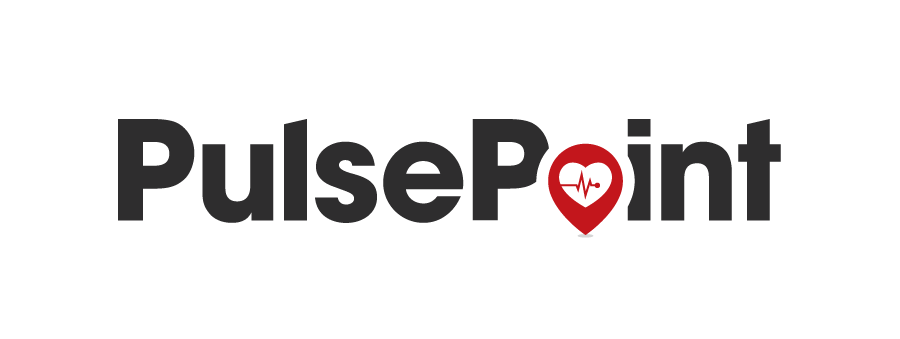
PulsePoint’s platform is built upon the most robust first-party data, with health audience identification, targeting, analytics, and optimization capabilities integrated into one unified, holistic solution. Pulsepoint offers 1:1 NPI-level targeting, insights, and measurement capabilities, as well as 95% matchback. What’s unique about the platform is that you can analyze attribution and performance cross-device on all digital touchpoints of the HCP: website, email, display, CTV, native & search.
3. DeepIntent

Maximize cookieless reach with Deep Intent’s proprietary identity solution that directly connects healthcare datasets to anonymized clinical, behavioral, CRM, and first-party publisher data in real time. The DeepIntent Marketplace gives you access to omnichannel, premium, and brand-safe inventory from endemic and non-endemic partners across all channels and devices. Access their healthcare-specialized Connected TV offering, trade directly with publishers, and buy across the open exchange.
4. Lake B2B

Lake B2B’s geo-targeted NPI data can help you uncover the total number of physicians that you want to reach out to in a specific region with geo-targeted and pre-qualified lists. The platform’s data experts can help you understand the most prospective healthcare audiences that are available for your HCP campaigns by inferring the NPI database.
5. Tap Native
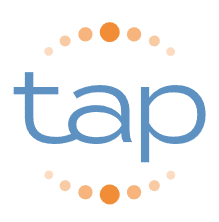
At the heart of Tap Native’s HCP marketing engine is a matching table of physicians and other HCPs categorized by NPI number. This matching table allows HCP marketers to select specific specialties to target their content style offer. Tap Native unifies multiple disparate data sources to create one unique, single profile for each healthcare professional in our matching table. The system can identify unique healthcare professionals on any website at the impression level and provide physician level data reporting which includes the NPI number and name of the HCP who saw and clicked the advertiser’s ad.
6. Lasso
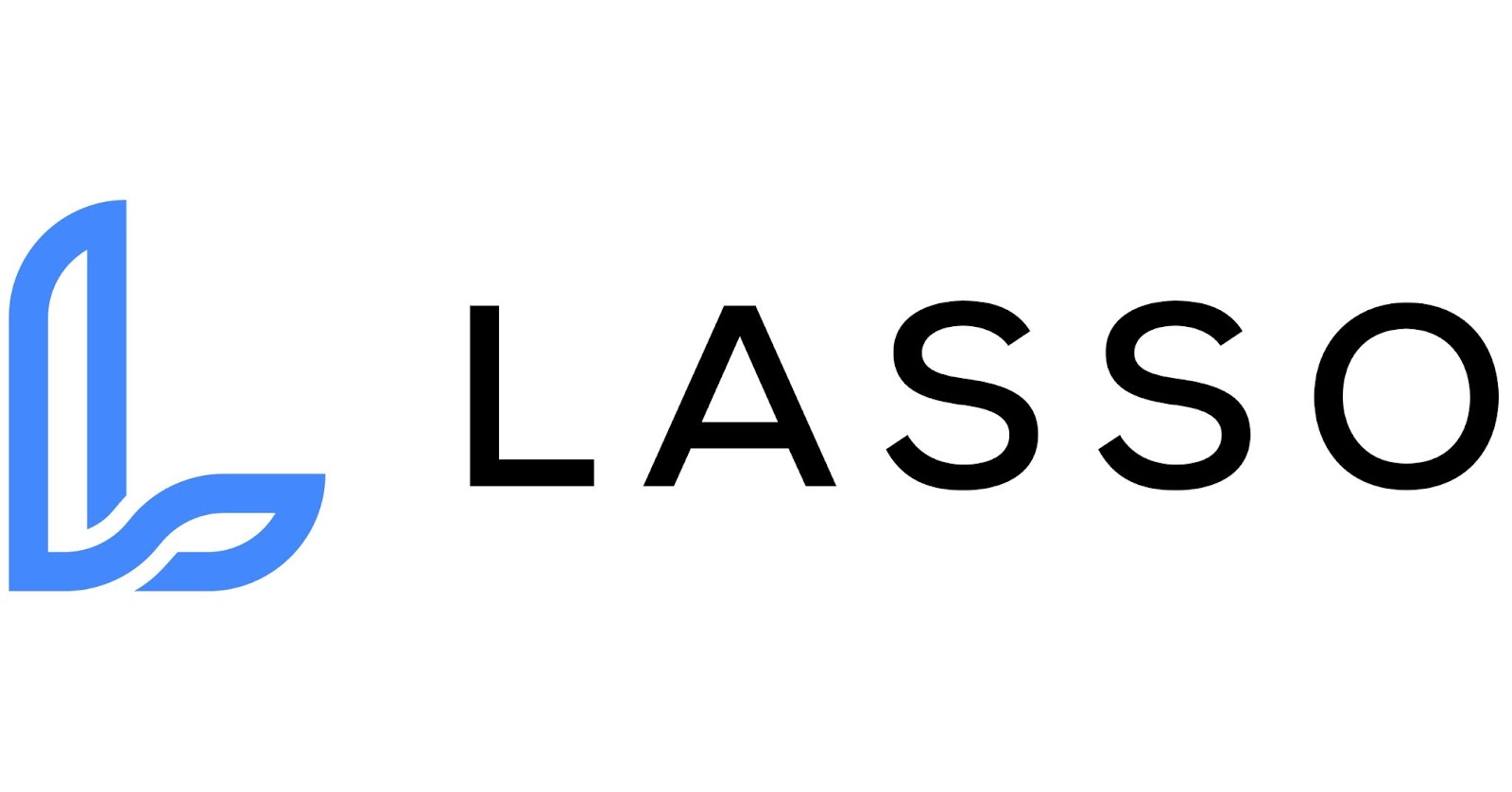
Lasso is a NPI marketing platform that helps healthcare providers increase their visibility and reach potential patients. It is a cloud-based software that allows healthcare providers to manage their online presence and connect with potential patients through various marketing channels such as search engines, social media, and directories.
In today’s healthcare world, healthcare advertisers need to find the most effective and efficient way to connect with HCPs. NPI targeting allows them to do this. By focusing on 1:1 relationships with HCPs, advertisers can put themselves in the best position to generate targeted HCP engagement and optimize their campaigns—now and in the future. If you’re looking for a growth partner that can help unlock the benefits of NPI targeting for your company, you can contact us here.





